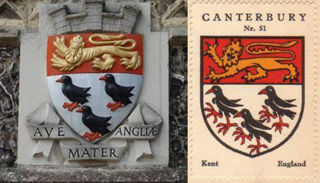
We're chuffed to see Kent's first wild-born chough in over 200 years
16th Aug 2025
Habitat is key for the red-billed chough
Once a common sight in Southern skies, the red-billed chough gradually disappeared due to loss of habitat and persecution.
Decades of work to restore and manage vital chalk grassland habitat in East Kent have laid the foundation for the chough’s return. Kent Wildlife Trust has worked closely with landowners and partners including the National Trust and White Cliffs Countryside Partnership to bring conservation grazing back to the region and create the ideal conditions for choughs to forage and breed.
Choughs like to nest on cliffs to remain safe from predators, and they also need insect-rich grassland to forage for food. Chalk grassland is among the most biodiverse habitats in the UK, supporting rich communities of wildflowers and invertebrates. The insects and larvae found in dung from grazing animals are a crucial food source for choughs during the breeding season.

Rearing choughs for soft release
Rearing the red-billed choughs is a delicate and complex process, overseen at Wildwood by dedicated conservation staff. Our daily care includes feeding, enrichment, monitoring the pairs and reviewing nest-cam footage to understand how to optimise breeding.
Some of our red-billed choughs are creche-reared, while others are parent-reared, before both move to our release aviary, where they become accustomed to the weather, to the area they will be released into, to the sound of their predator, the peregrine, and where they can socialise with other choughs from the release project.
Into the wild
The choughs released to date are still young, but along with this first wild chick, we’ve noted more females nesting this year and are optimistic we’ll see more wild chicks in 2026.
Depending on age and conditions, a red-billed chough will hatch three to six eggs, but factors such as lack of insects to feed chicks, bad weather all affect survival rates.
More chough chicks reared at Wildwood Kent, Wildwood Devon, and Paradise Park this year have moved to the release aviary to begin their final preparations before taking flight. They’ll be joined later in the season by young birds bred at Camperdown Wildlife Park.
In the wild, we continue to provide the choughs with supplementary food, needed, for example, when the ground is too dry or frozen, or when parasite treatments kill the insects they like to feed on in livestock dung, and generally to help the population establish itself. Volunteers play an absolutely crucial role here too, monitoring the choughs and providing nest site protection.

Amazing support
This ambitious project was funded by the Natural England Species Recovery Capital Grant Programme for 18 months until March this year, with contributions from conservationists and donors to the Chough Appeal bringing in significant funding to help the project continue.
We’re incredibly grateful to everyone who has donated to this collaborative project to reestablish a wonderful native bird in Kent.

A special link with Kent
The red-billed chough has a longstanding cultural and historic association with Kent. It appears on the coat of arms of Canterbury and in the legend of Thomas Becket, where it’s said the bird’s red beak and legs were stained by the martyr’s blood!
So perhaps it’s fitting that the first wild-born chough in over 200 years fledged from a nest at Dover Castle!





